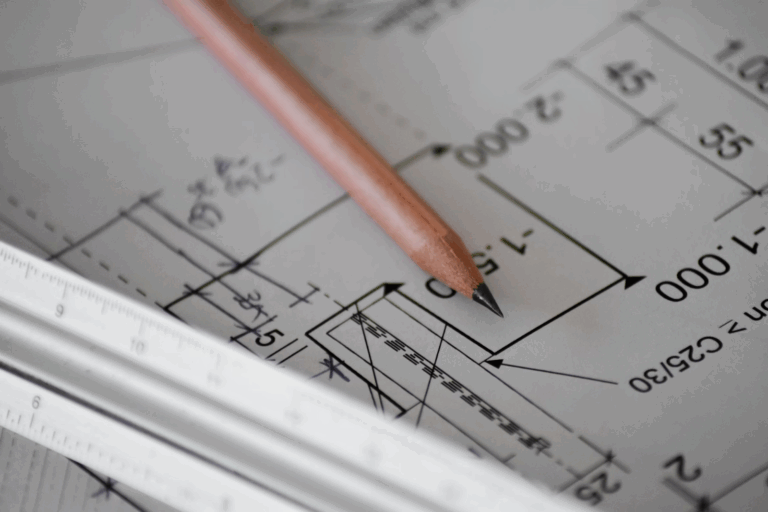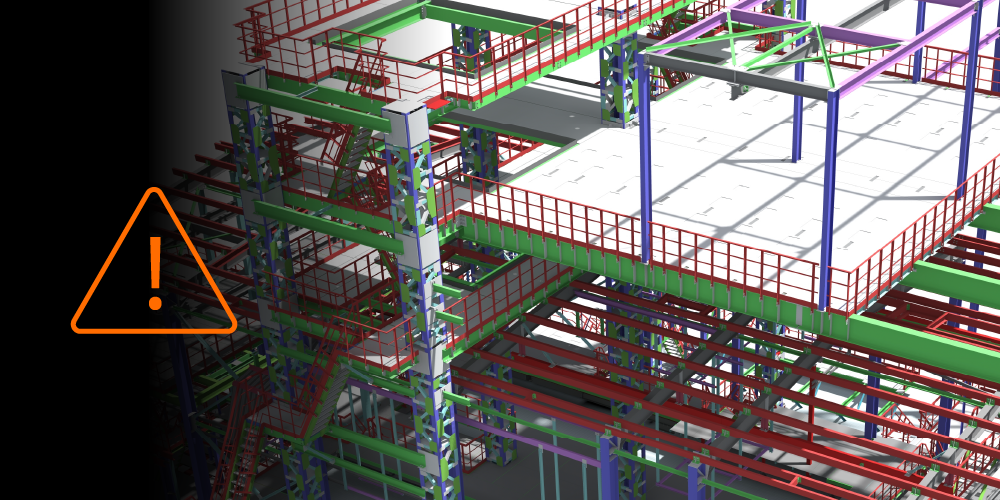Related Articles
— 8 min read
Mastering Schematic Design: A Practical Guide for Australian Commercial Projects

Last Updated Sep 25, 2025

Josh Krissansen
48 articles
Josh Krissansen is a freelance writer with two years of experience contributing to Procore's educational library. He specialises in transforming complex construction concepts into clear, actionable insights for professionals in the industry.
Last Updated Sep 25, 2025

As commercial projects across Australia grow more complex and compliance-driven, operational teams are under pressure to deliver certainty from day one. Safety managers, site supervisors, and project engineers aren’t just inheriting plans—they’re being asked to de-risk them, align them with field conditions, and execute without margin for error.
That work starts well before the first pour or delivery. It starts in schematic design.
This early design phase is where project vision meets practical constraints, where access zones, system layouts, staging areas, and compliance pathways are mapped out. Decisions made here shape how safely and efficiently the project unfolds on site.
In this article, we unpack the role of schematic design in Australian commercial construction and outline the levers that operational leaders can pull to influence buildability, safety, and downstream performance from the outset.
Table of contents
What is Schematic Design?
Schematic design is the first formal phase of building design. It transforms the client brief into a clear spatial framework that guides every downstream decision.
This phase defines the building’s core layout, including spatial relationships, circulation routes, and key functional zones.
It also establishes critical early outputs that support feasibility, coordination, and cost control:
- Preliminary drawings: Site plans, floor plans, elevations, sections, and parti diagrams provide a visual reference for spatial intent
- Building system assumptions: Initial layouts for structure, HVAC, electrical, and plumbing help assess technical feasibility and integration risks
- Cost planning inputs: Clarified area requirements, access points, and service connections support early-stage budgeting and risk analysis
BIM tools support this phase by generating coordinated 3D models and consistent outputs for stakeholder review. Early input from engineers and subcontractors ensures the design is buildable, compliant, and efficient to deliver.
The schematic package becomes a shared reference point for all disciplines. It anchors the project vision and sets the foundation for design development.
Spotlight on Regulatory Requirements in New South Wales
Site conditions, zoning overlays, and planning constraints play a critical role in meeting compliance requirements across jurisdictions.
In New South Wales, under the Design and Building Practitioners Act 2020, detailed designs for major systems must be lodged digitally before construction approval. This makes accurate and coordinated schematic documentation essential for meeting planning requirements and avoiding costly redesigns.
Schematic Design vs. Layout Design: Understanding the Distinction
Schematic design is a formal design phase that defines the project’s spatial framework and overall architectural intent. It sets out the core structure, circulation paths, adjacencies, and building systems at a high level.
Layout design, by comparison, refers to the detailed arrangement of specific elements within that framework. It is not a separate phase but an ongoing process that continues through design development and construction documentation.
The key distinction lies in scope and resolution: schematic design defines form and intent; layout design develops arrangement and execution.
| Schematic Design | Layout Design | |
| Purpose | Defines the overall spatial framework and architectural concept | Arranges specific elements within spaces to support function and constructability |
| Timing | Occurs as the first formal design phase | Occurs continuously throughout the design and documentation phases |
| Outputs | Site plans, floor plans, elevations, sections, and parti diagrams | Room layouts, equipment placement, service zones, MEP routing |
| Level of Detail | High-level and conceptual | Detailed and annotated |
| Focus | Form, circulation, adjacencies, and early system coordination | Fit-out, spatial efficiency, and buildability |
| Role in Delivery | Sets the design foundation for all downstream phases | Resolves spatial execution for construction |
Both are essential to successful project delivery. Schematic design sets the direction. Layout design ensures the spatial vision can be delivered accurately on site.
Breaking Down the Schematic Design Process
The schematic design phase sets the technical and spatial direction for the entire project. It translates strategic intent into coordinated design outputs that guide later development, costing, and approvals.
Each of the following elements plays a critical role in shaping a buildable, cost-aligned, and compliant design.
Information Gathering
The process begins once funding and early planning approvals are in place. Key inputs include feasibility studies, master plans, and client directives.
Zoning analysis and site evaluation are critical during schematic design. Zoning laws influence land use, building height, setbacks, and density, directly shaping the building’s footprint and layout.
Site conditions such as topography, soil quality, and existing infrastructure affect access, utility connections, and foundation design. Early review of both ensures compliance and helps prevent costly changes later.
This stage defines the project goals, site conditions, constraints, and long-term operational needs.
Preliminary Drawings
Early drawings clarify spatial logic, environmental context, and form. These typically include:
- Site plans: Indicate orientation, access, infrastructure, and environmental factors
- Floor plans: Define circulation, functional adjacencies, and spatial hierarchies
- Elevations and sections: Show the building’s external form and internal relationships
- Parti diagrams: Express the overarching design logic and spatial hierarchy
Spatial Programming and Systems Planning
Space requirements are defined based on intended functions and user needs. Broad system layouts, including structure, HVAC, plumbing, and electrical systems, are established.
This enables early input from consultants, allowing them to assess feasibility and identify coordination issues before design development.
Cost Estimation
Area schedules and system assumptions inform initial quantity takeoffs, enabling early cost planning and value engineering before detailed documentation begins.
Cost estimating aligns design scope with budget expectations from the outset, preventing conflicts down the track.
Client Feedback and Iteration
The design is refined through structured workshops and review cycles, where client input shapes layout priorities, functionality, and compliance direction.
Multiple design options may be presented and revised before a preferred scheme is selected.
Collaboration and Consultant Input
Early involvement from engineers and key subcontractors ensures buildability and helps identify potential compliance, structural, and services conflicts before design development.
This reduces the risk of redesign and delays in later phases.
What Comes After Schematic Design?
Schematic design sets the framework, but it is only the beginning of the delivery process. The following phases take the project from high-level intent to a fully constructed reality.
Design Development
Design development refines the schematic drawings into more detailed plans.
Floor plans, elevations, and sections are developed further, while structural systems and major services like HVAC and plumbing begin to take shape. Material selections are introduced, and early design coordination begins. This phase also enables preliminary pricing and builder feedback.
Construction Documentation
This phase translates the refined design into a complete, coordinated documentation set.
It includes detailed architectural, structural, and services drawings with supporting specifications. These documents are required for building approvals, contractor pricing, and on-site execution. Clarity and coordination at this stage are critical to avoid delays and cost overruns during construction.
Tendering and Procurement
With documentation complete, the project is issued to contractors for pricing.
Depending on the project, this may involve an open or selective tender process. Once pricing is reviewed and a builder is selected, contracts are awarded, and key trades and materials are procured.
Construction Phase
Construction begins using the approved documents and contract scope.
Work typically progresses through structure, services, and internal fit-out. Throughout this phase, project teams manage site coordination, resolve issues, and monitor progress against milestones.
Project Closeout
The project wraps with inspections, commissioning, and formal handover.
As-built drawings, operation manuals, warranties, and defect lists are delivered to the client. All systems must be tested to confirm they meet performance and compliance requirements before final completion is certified.
Tips for a Successful Schematic Design Phase
A well-managed schematic design phase sets the pace for project success. It’s a critical opportunity to lock in commercial priorities, reduce downstream risk, and maintain cost discipline from day one.
Establish Strategic Design Parameters Early
Start with a client brief that’s endorsed at the executive level and treated as a binding reference point. It should define spatial requirements, performance targets, and budget ceilings.
This ensures the design team stays aligned with operational objectives, avoiding costly missteps later in the process. Without clear boundaries, schematic design can drift, adding risk, not removing it.
Treat Site and Planning Analysis as a Compliance and Risk Filter
Understanding the site and planning controls upfront reduces approval delays and prevents wasted design effort.
Teams should:
- Complete zoning, access, and infrastructure reviews early to test massing and orientation feasibility
- Identify constraints such as DA risks, easements, and service limitations before design begins
- Apply findings directly to design logic, shaping circulation, access points, and envelope strategy
Integrate Engineering and Constructability Inputs From Day One
Buildability and compliance risks compound when engineering is treated as a downstream input. Instead, embed engineers and preferred subcontractors into early-stage workshops.
Use their input to pressure test system layouts, validate plant sizing, and identify coordination risks across structure and services. Catching these issues in schematic design prevents costly rework in documentation or on-site.
Use Schematic Design to Establish Cost Discipline
Ensure schematic designs anchor financial feasibility, not just spatial intent, by:
- Benchmarking against similar project types: Validate scale and program assumptions before design drifts
- Running early quantity takeoffs: Test layouts and service zones against budget targets
- Using schematic outputs for early VE: Don’t defer value engineering to design development
Formalise Governance and Decision-Making Frameworks
Clear governance structures keep schematic design phases focused, efficient, and aligned with program milestones.
- Assign a single client-side decision-maker to manage approvals and escalation
- Set fixed design checkpoints tied to scope and budget gates
- Track design changes in real time, with cost and program impacts documented as they occur
Without structured governance, schematic design becomes reactive and fragmented, slowing progress instead of accelerating it.
Leverage Digital Models to Drive Coordination and Continuity
BIM should start in schematic design, not after it.
Early 3D models allow teams to lock in spatial allowances, service corridors, and access logic while designs are still flexible. Running clash detection and compliance pre-checks at this stage prevents rework and delays later. When file structures and documentation standards are established early, they carry directly into DD and CD without duplication or data loss.
Strong schematic design creates clarity, reduces risk, and sets the foundation for successful delivery
From defining spatial intent to coordinating systems and managing cost, schematic design shapes every phase that follows. When led strategically, it gives commercial builders the structure and certainty needed to deliver on time, on budget, and without surprises.
Categories:
Written by

Josh Krissansen
48 articles
Josh Krissansen is a freelance writer with two years of experience contributing to Procore's educational library. He specialises in transforming complex construction concepts into clear, actionable insights for professionals in the industry.
View profileExplore more helpful resources

Managing Direct Costs in Construction: How Visibility Drives Profitability
Direct costs define the financial reality of every construction project. They cover the labour, materials, and equipment that drive delivery and determine profitability. But even the best-planned budgets can shift...

BIM Clash Detection: Reducing Rework, Delays, and Risk in Construction
Design clashes can be a significant hidden cost in construction, as each conflict between systems risks expensive rework, project delays, and reduced margins. BIM clash detection empowers teams to identify...

Next-Gen Job-Costing: Ready to Move? 5 Things to Consider Before You Get Started
In this three-part series, Quantity Surveyor turned Financial Solutions Specialist Clint Burgess uncovers the real-world gains for people, processes, and profits when businesses move from legacy to next-generation Enterprise Resource...

From Workarounds to Workflow: Solving Construction’s Legacy Job-Costing System Challenges with Next-Gen Tools
In this three-part series, Quantity Surveyor turned Financial Solutions Specialist Clint Burgess uncovers the real-world gains for people, processes, and profits when businesses move from legacy to next-generation Enterprise Resource...
